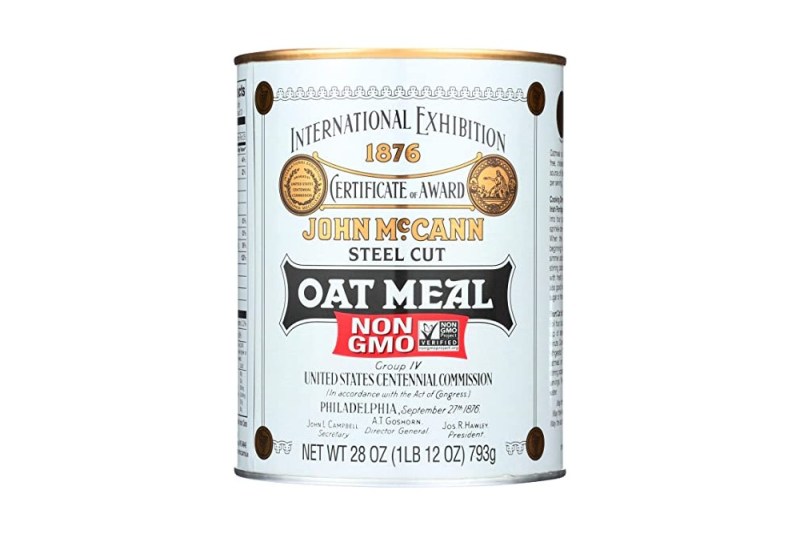Starting your day off right with a nutritious breakfast is essential for mental clarity and sustaining energy levels. As a nutritionist, I am always encouraging my clients to take a little extra time out of their morning to put something together that is high in nutrients like fiber and complex carbohydrates. If you are really in a rush, cereal can be a great option.
“Breakfast cereals are healthy when they are made from whole grains, are low sugar with no added sugar, and have a moderate amount of fiber and protein,” said Janette Marsac, a former registered dietitian in New York City, who added that cereal can be a great source of whole grains, which have been linked to a lower risk of heart disease and diabetes.
If you are interested in making cereal part of your morning routine, keep reading to discover the best healthy cereals to try!










Best overall pick
Food For Life Ezekiel 4:9 Organic Sprouted Grain Cereal
- High in fiber
- Organic ingredients
- Contains omega 3s
- Some don't like the taste
| Specification: | |
| Protein per serving | 8 grams |
| Fiber per serving | 6 grams |
The entire line of Food For Life Ezekiel Cereals should nail the nutrition requirements for any “healthiest breakfast cereals list.” They are made from sprouted, organic, live grains. Sprouting allows your body to best absorb the nutrients contained in the grains. The cereals also have seeds and legumes for a healthy dose of protein and fiber; most contain at least 6 grams of each. They are free from yeasts, flours, additives, and preservatives.

Best value pick
McCann's Steel Cut Irish Oatmeal
- Minimal processing
- No added sugar
- Rich, nutty flavor
- Longer cook time
| Specification: | |
| Protein per serving | 4 grams |
| Fiber per serving | 3 grams |
Compared to the rolled or quick oats that make up many common oatmeals, steel-cut oats are lower glycemic, meaning they don't spike your blood sugar and then leave you with a crash. This is largely due to their higher fiber content. Steel-cut oatmeal does take longer to prepare, but you can actually make it ahead of time and freeze it, then take it out and reheat it when you’re ready to eat.
This oatmeal is non-GMO and contains no sugar. One serving provides 4 grams of protein and 4 grams of fiber. Consider making it with your favorite milk and tossing in a few nuts, seeds, and berries when you're craving a hot cereal. While you might worry that tossing in nuts and seeds will add a lot of calories from the fat content, the natural fats actually provide a satiety factor that is typically absent in most cereals. In fact, it is because most cereals usually contain less than 3 grams of fat that they tend to not provide a feeling of long-lasting fullness.
“Adding hemp seeds, chia seeds, flax meal, walnuts, or sliced almonds provides our cereal with some fat while also adding great flavor and texture,” explained Marsac. “Fresh berries are also a good add-in because they will sweeten the cereal without excessive sugar.

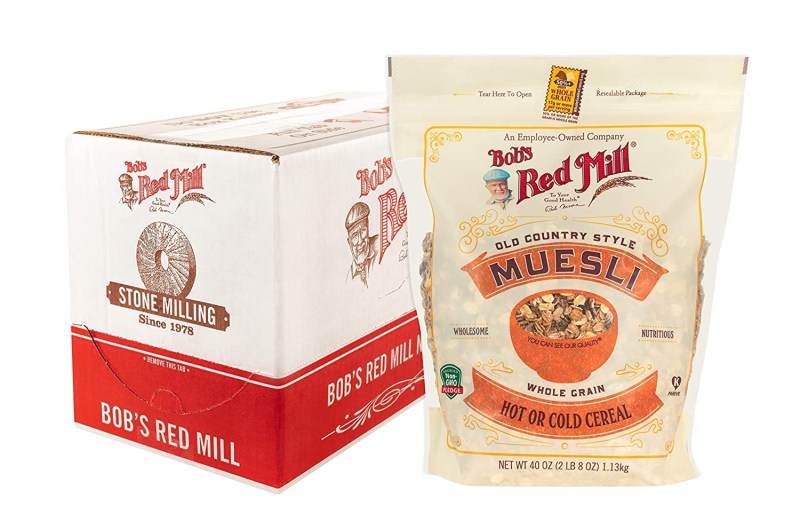
Best no sugar added
Bob's Red Mill Resealable Old Country Style Muesli Cereal
- Nutrient-dense ingredients
- Versatile serving options
- No added sugars
- Lacks crunch
| Specification: | |
| Protein per serving | 4 grams |
| Fiber per serving | 4 grams |
Bob’s Red Mill Old County Style Muesli contains a blend of five heart-healthy, rolled whole grains — oats, wheat, barley, rye, and triticale. The variety of grains, flax meal, sunflower seeds, chopped walnuts, and sliced almonds makes for a crunchy, texturally exciting bite. There are also chopped dates and raisins for a touch of natural sweetness and chewiness.

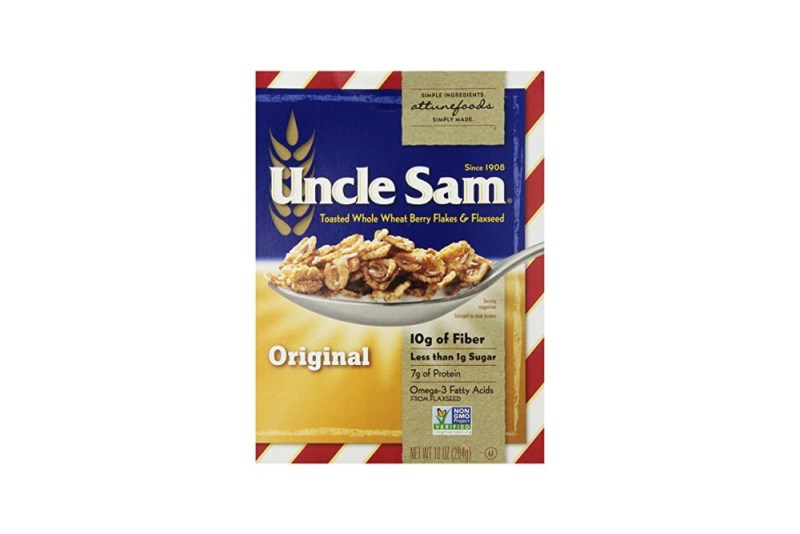
Best for fiber content
Uncle Sam Cereal, Original
- High in fiber
- Only 4 ingredients
- No added sugar
- Very plain taste
| Specification: | |
| Protein per serving | 8 grams |
| Fiber per serving | 10 grams |
This healthy breakfast cereal contains only four ingredients: whole wheat kernels, whole flaxseed, salt, and barley malt. Though barley malt is sweeter, a full serving of this cereal (3/4 cup) contains less than one gram of sugar. You also get an impressive 10 grams of fiber, 7 grams of protein, and 5 grams of satiating fat.

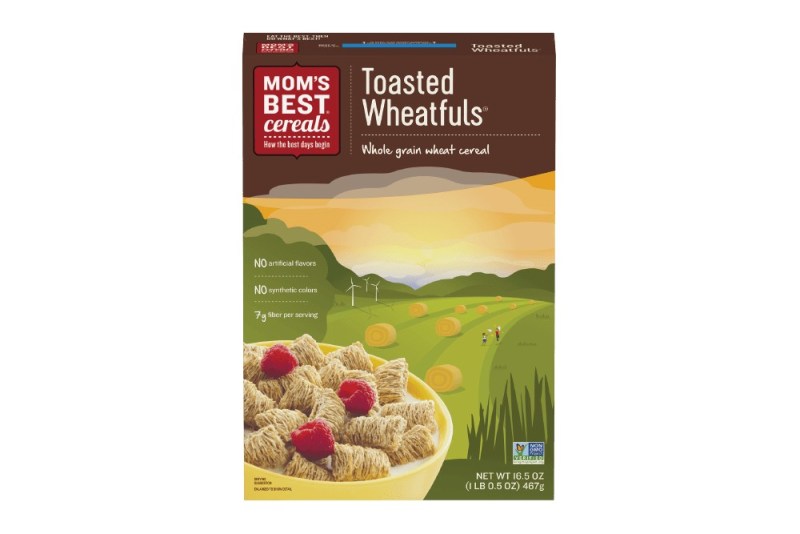
Best for minimal ingredients
Mom’s Best Cereals Toasted Wheatfuls
- Only 1 ingredient
- No added sugar
- Non-GMO
- Dry texture
| Specification: | |
| Protein per serving | 6 grams |
| Fiber per serving | 7 grams |
This nutrient-packed cereal contains only one ingredient: whole wheat. It’s naturally rich in vitamins and minerals, sugar free, and has 7 grams of satiating, natural fiber, and 6 grams of protein.

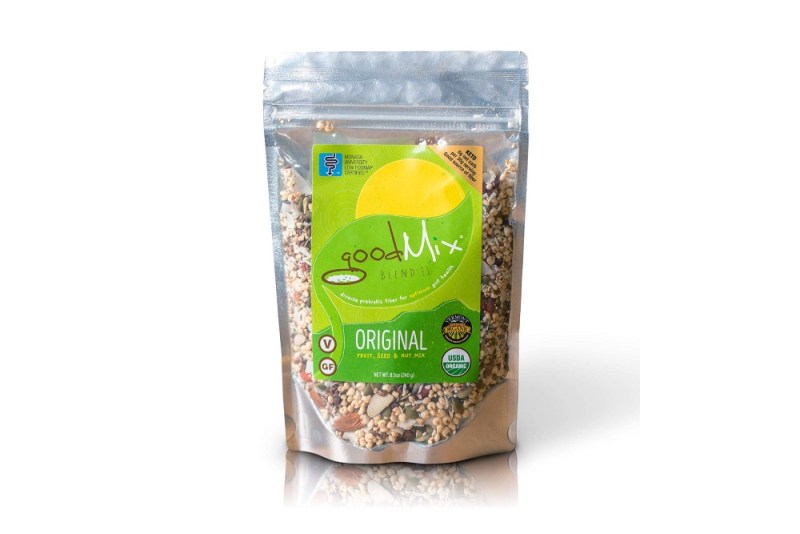
Best organic
Good Mix Blend 11 Original Cereal
- High in fiber
- Prebiotic support
- Nutrient-dense mix
- Requires soaking
| Specification: | |
| Protein per serving | 6 grams |
| Fiber per serving | 5 grams |
If you’re looking for a cereal that will provide a hefty dose of gut-regulating fiber from natural, whole grains and seeds instead of inulin, this Good Mix blend of organic seeds and grains is a great option. Made from 11 organic ingredients — chia seeds, buckwheat, pumpkin seeds, almonds, flax seeds, sesame seeds, dried coconut, raw cacao nibs, dried goji berries, puffed millet, puffed amaranth — the cereal is texturally pleasant, tastes great, and has a strong nutritional profile.
It's free from gluten, GMOs, and natural and artificial sweeteners. The seeds provide a good source of omega-3 fatty acids, and 5 grams of fiber and protein per serving.

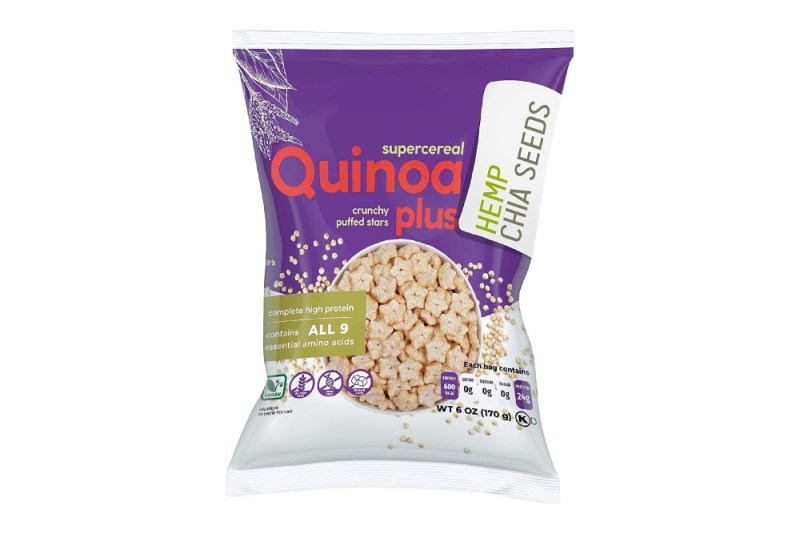
Best vegan cereal
Awsum Snacks Quinoa Plus Cereal
- Vegan protein source
- Gluten-free cereal
- Low in sugar
- Slightly bland flavor
| Specification: | |
| Protein per serving | 4 grams |
| Fiber per serving | 2 grams |
This light and crunchy cereal is vegan, organic, kosher, and does not contain gluten, sodium, or sugar. It is made from just organic white quinoa, hemp seeds, and chia seeds, and has 4 grams of protein per serving.

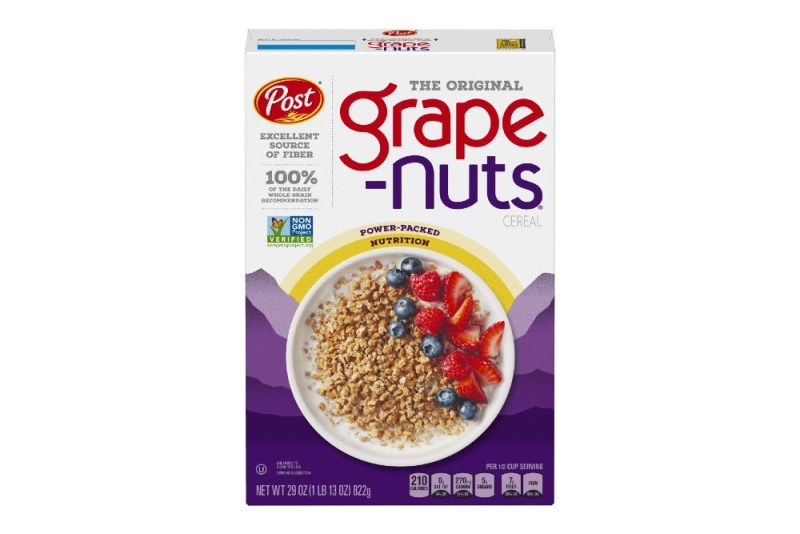
Best source of vitamins and minerals
Post Grape-Nuts
- High in folic acid
- Contains whole grains
- Low glycemic index
- More powdery texture
| Specification: | |
| Protein per serving | 6 grams |
| Fiber per serving | 7 grams |
The original Grape-Nuts — now a classic — remains one of the healthier offerings from a conventional cereal brand. One serving of this heart-healthy cereal provides 7 grams of fiber, 6 grams of protein, and 0 grams of added sugar. It’s also a micronutrient powerhouse, containing 90% of the RDA of iron and folate, as well as over 50% of the RDA of thiamine and several other key vitamins and minerals.

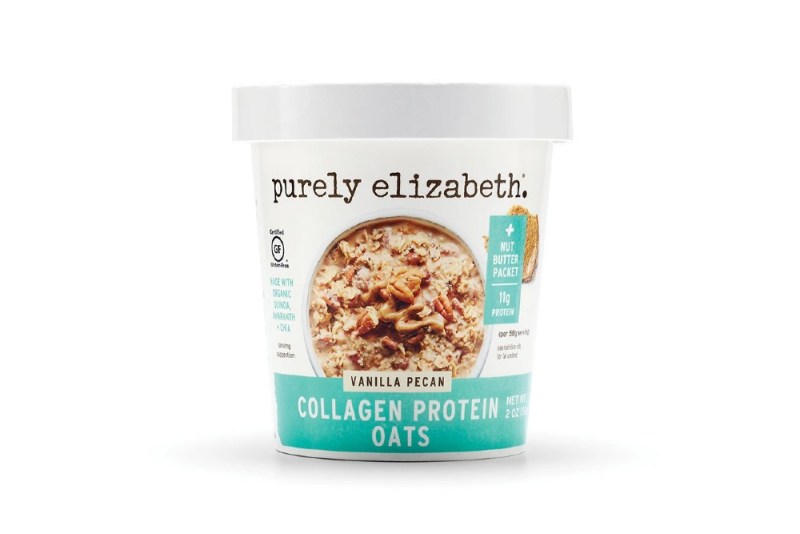
Best gluten-free
Purely Elizabeth Gluten-Free Collagen Oats
- Gluten-free cereal
- Contains collagen
- No artificial flavors
- Contains added sugars
| Specification: | |
| Protein per serving | 9 grams |
| Fiber per serving | 5 grams |
Purely Elizabeth Collagen Oatmeal Cups come in two delicious flavors — Vanilla Pecan and Blueberry Walnut. Both serve as nutrient-packed cereals to start your day. An added perk is that the convenient cup packaging serves as a functional on-the-go container for busy mornings.
The oatmeal is made with premium grass-fed bovine collagen and includes a packet of NuttZo nut butter, which imparts a smooth, nutty creaminess to the cereal. Both flavors are gluten-free and made with ancient grains like amaranth and quinoa, chia seeds, and no refined sugars. Each individual cup has 11 grams of satiating protein (including muscle-repairing collagen), 4 grams of fiber, just 3 grams of sugar for a slightly sweet, satisfying, and texturally varied hot cereal.

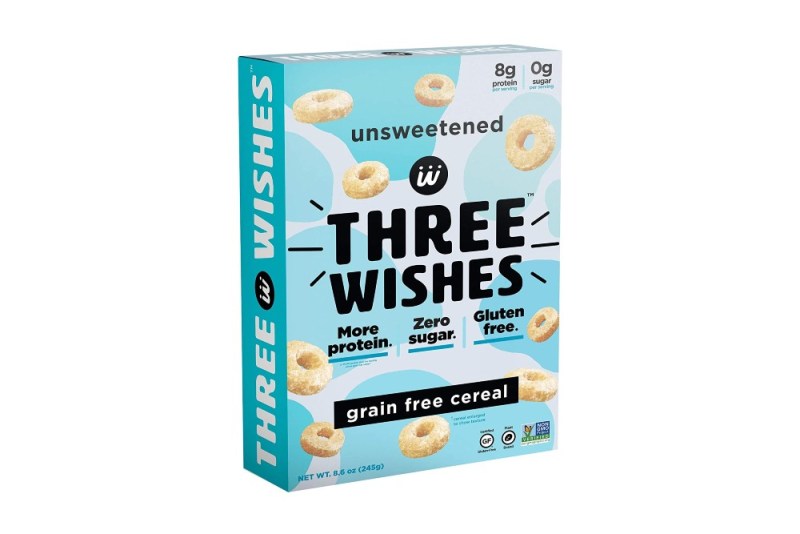
Best sugar-free option
Three Wishes Unsweetened Cereal
- No sugar
- Gluten-free cereal
- Grain-free cereal
- Some consider costly
| Specification: | |
| Protein per serving | 8 grams |
| Fiber per serving | 3 grams |
Made with only four ingredients — chickpea, pea protein, tapioca, and salt — Three Wishes Unsweetened Cereal is about as healthy as you can get. While it resembles the Cheerios we all remember from childhood, the comparison ends there. Three Wishes is gluten-free, grain-free, and sugar-free, and contains no artificial sweeteners, dyes, corn, or soy.
It also packs 8 grams of vegan protein and is non-GMO verified. Don’t expect a big flavor bomb here, though. The cereal doesn’t taste like much; it has a slightly nutty flavor with undertones of legumes, so you might want to throw a handful of fresh berries on top.

Frequently Asked Questions
When it came to creating this list of top-tier cereal options, Janette Marsac provided some valuable insight. Going beyond her recommendations, we considered important factors like protein content, grams of fiber per serving, if there was any added sugars, and the ingredient lists. If you are someone who prefers healthy breakfast options, less is usually more when it comes to ingredients. Artificial flavors and preservatives aren't needed for a tasty and well-balanced meal, and we kept that in mind when searching for the best cereals. We even found a cereal that contains only one ingredient!
Minimal ingredients also makes a cereal more likely to be a good option for people with allergies. If you're a vegan or prefer to stick to foods that are lower on the glycemic index, there are great cereal choices for you on this list as well. And just because these cereals are on the healthier side, that doesn't mean they aren't still delicious and have many positive reviews. You can always add toppings if you want to spice them up further, like berries.
There’s no simple answer to this question, because the amount of breakfast cereal you should eat depends on several factors, including age, activity level, and calories needed. Assuming you’re eating a healthy, fiber-filled cereal, sugar shouldn’t be a factor.
Adults should consume 30 to 45 grams (about 6 to 8 tablespoons) of cereal. If you’re an active adult, then you can eat more. Also, aim for a breakfast that totals around 300 to 400 calories, so adjust your cereal portion accordingly based on what else you're eating, such as fruit with your cereal. High-fiber cereals, such as those with whole oats or shredded wheat, can be more filling, so you may need less.
Check the serving size on the box, which is a good starting point, but remember, it may not be tailored to your individual needs. You can use a kitchen scale to measure grams or a measuring cup. A 1/2 cup scoop often holds about 30 grams, though this can vary depending on the cereal.
For a tasty and nutritious start to your day, give any of these healthy cereals a try!


